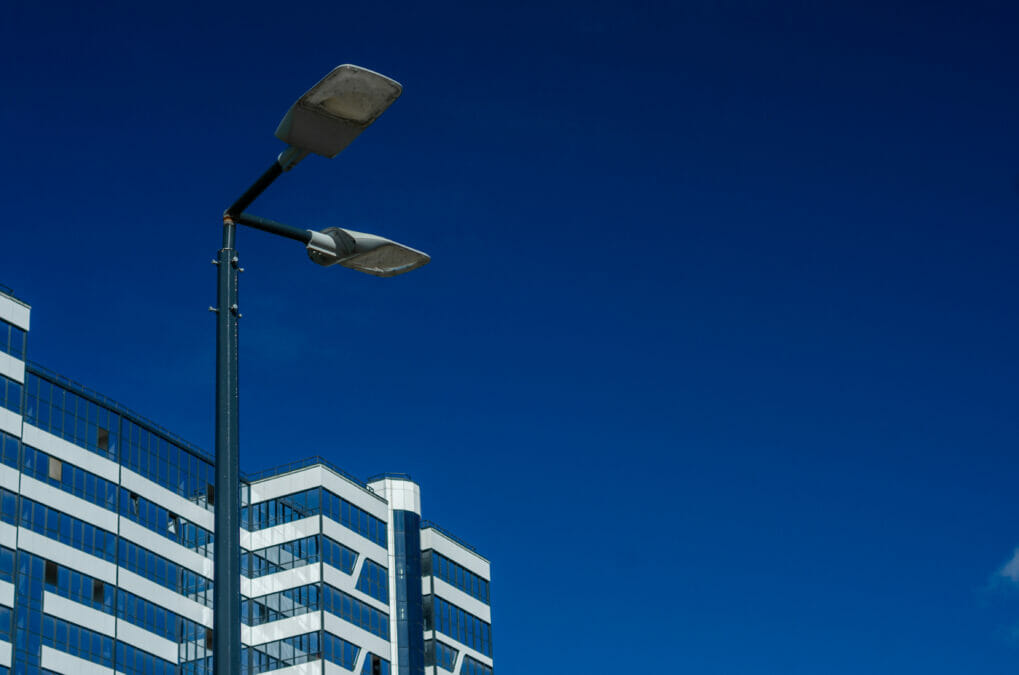Beyond lighting our way at night, most of us probably never give a second thought to the street lamps and poles that dot our cities. But as smart cities strive to achieve their sustainability objectives, they are looking to the humble street pole as one of the heroes helping them to achieve their green goals.
The smartest cities around the world are striving to help us live more sustainably. The world’s population is migrating to cities while strained land resources are forcing cities to densify and reduce their environmental footprint. This means near-constant upgrades to city infrastructure; thus, city authorities are always looking for new innovative services, particularly in sectors that directly impact sustainability, such as utilities and public transport. This is where the digital street pole is helping.
The EV revolution
Beyond their global climate change impact, the air pollution caused by internal combustion engines (ICE) is generating huge local health costs to citizens, as well as damage to city buildings. Thus, along with electrified urban rail and buses, cities are keen to embrace and support the migration to electric vehicles (EVs), especially autonomous EVs and shuttles. They have the potential to revolutionise transit systems in cities and, thus, improve well-being, reduce healthcare costs, and eventually eliminate other damaging effects of smog and particulates.
To support EVs, some cities have gone so far as to ban ICE vehicles from their city centres, while others are providing incentives for EVs such as free parking and cheaper licensing. If EV adoption is going to be successful, however, cities will also need to densify electric charging infrastructure in the inner city. Suburban EV charging is normally the responsibility of homeowners, who typically use their driveways and garages to plug-in at night. In the inner city, however, the municipality usually must get involved to provide charging infrastructure at the curb because residents don’t have access to off-street parking. This is where street poles show their promise.
The biggest trends in tech sustainability
Bundling services at the pole
While there is already power going to the street pole, it is sometimes insufficient to support EV charging. To economically bring sufficient power to the poles, bundling other services helps to offset the investment costs. If, for instance, the city hasn’t upgraded from sodium-vapour to LED streetlights, this conversion can be done in tandem with EV chargers, which are only a small extra cost.
If adding charging to the poles involves digging up the streets, bundling fiber optic cable into the installation helps to defray some of the costs by extending broadband access at the same time. Other ancillary services that can be bundled with the poles to defray the expense include extended cell coverage using small radios on the poles, as well as local Wi-Fi. The city can also use the poles for CCTV and IoT sensors.
Extending coverage is especially important for 5G radios that use higher frequency spectrum such as mmWave. These higher frequency millimeter radio waves do not travel a long distance and do not penetrate buildings, but they can be used to increase new applications in public spaces. One of the use cases for high performance 5G connectivity is to support autonomous bus shuttles, like the current trial between Gare de Lyon and Gare Austerlitz in Paris. Street poles are ideal for adding additional radio access and avoid the cost of using bespoke poles for the 5G radio access network.
IoT sensors and cameras on the poles can also be used to provide real-time traffic analysis and modeling to help manage congestion, as well as providing information for citizen, visitors and public safety authorities. Scene and audio analytics can be used to create models of normal usage patterns using machine learning. The analytics software can alert authorities when anomalies occur that might indicate vehicle or pedestrian incidents on the street. Pole-mounted sensors can also be used to monitor air quality, so as to inform citizens and enforce low-emission zones (LEZs).
The other cost-sharing benefit that the city can pursue is with the local power utility. Street chargers can also take power from parked vehicles (if their owners have agreed). In this way, the enormous battery capacity of a city’s EV fleet can be leveraged during peak usage periods to smooth demand curves on the grid. This means lower costs for fuel-based generation facilities and backup storage for intermittency issues associated with renewables.
5G and sustainability: a corporate responsibility
Early trials
There have been many early efforts in cities as diverse as London, Los Angeles, New York and Toronto to provide pole-based EV charging. Espoo, Finland, is currently running a pilot program for a self-driving shuttle that uses a 5G network with radios mounted on street poles. It also uses the poles to monitor air quality and weather, provide video-surveillance at bus stops and pedestrian crossings, as well as contribute to city maintenance optimisation, energy storage and smart lighting.
Another pilot being conducted in Leuven, Belgium, is part of their overall sustainable development and carbon neutrality plan. The poles use LED smart lighting to reduce electricity consumption, provide 5G-ready radio access, EV charging and host a variety of sensors that will be integral to future city services. In addition, the City of Le Havre is building a solar-based energy generation and storage system to power their smart poles and EV charging infrastructure that will also leverage a local 5G network.
Conclusion
With almost every major government looking for ways to meet its Paris COP21 climate commitments, the push is now on for EV adoption. Cities have the challenge of solving the charging problem for those citizens with no access to off-street and charging capabilities. Street poles are a promising way to deliver charging, but the costs are better shared with other services such as smart lighting conversion, radio coverage, fiber cable extension, and smart city services using IoT sensors, video cameras and audio sensors. As part of a larger smart city program, the humble street pole can become a digital and power hub for sustainable, next-generation city services.











